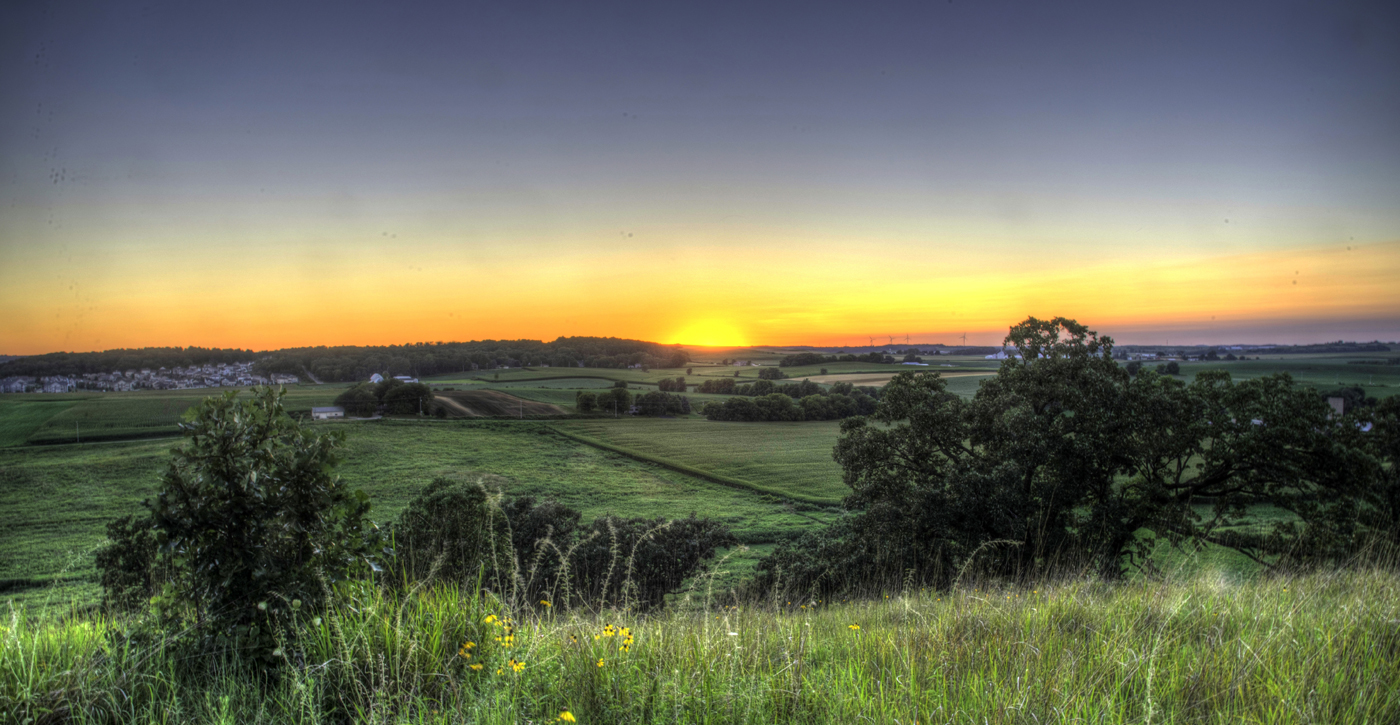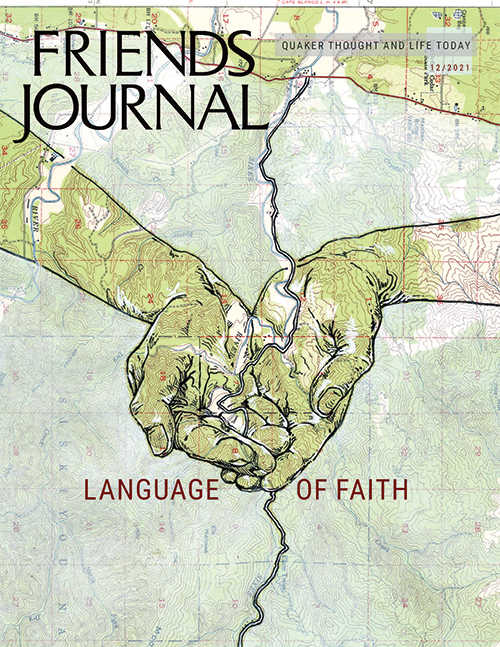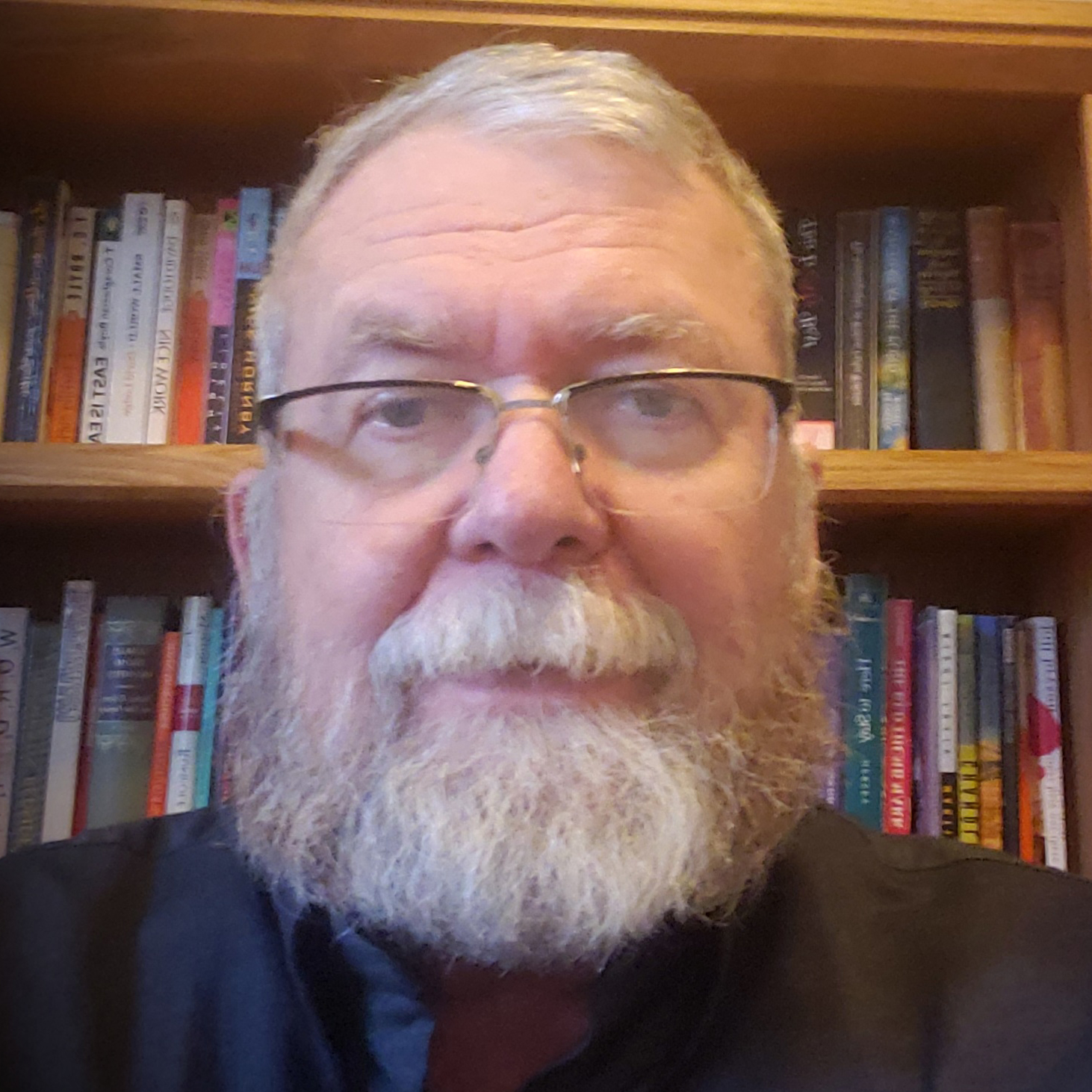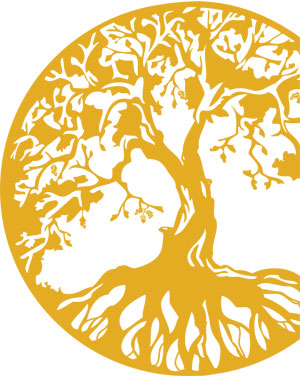Not far from the metropolis in which I live sits a large tract of land, thankfully preserved from development. At its center is a marsh and associated wetlands, with a wooded area at one end, and an oak savannah at the other end. The oak savannah rises up in a rather steep hill, which is known as Frederick’s Hill, apparently named after an early White settler in the region.
Not long ago I climbed the hill and watched a beautiful sunrise; the sky was clear, the air cool and filled with faint sounds of birds stirring and calling in the marsh below. Morning breezes rustled the oak leaves and gently pushed the waves of grasses and wildflowers. In the distance sunlight flickered on a large lake. I found it easy to picture the site, and the whole region, as it must have looked 200 years ago, before the landscape was transformed, before industrious settlers came, following in the footsteps of fur traders and other travelers.
At the base of Frederick’s Hill is a shallow indentation, out of which water boils up into a small pond and flows into the nearby marsh. That spot is known, not surprising, as Frederick Springs. It’s fascinating to watch the water bubble up and push the sand around, ripples dancing on the surface, weaving shadows across the pale brown bottom. The site was well-known to the Indigenous people of the region, the Ho-Chunks, who used to camp and water their animals there.
The Ho-Chunk buried their dead nearby, specifically in mounds atop and on the slopes of Frederick’s Hill. In their mythology the springs and hilltop, taken together, were a sacred site, a link to the underworld. In my mind I picture the grieving survivors at those funerals, looking out from Frederick’s Hill onto the nearby verdant hills and woodlands, taking solace in the presumption it would always stay as it was, and that their dead would rest in peace forever.
But that was not to be. The White men came, and with them their towns and farms. The mounds on the slopes disappeared under prairie plows, though the ones on the hilltop were spared. Those six mounds, holding maybe a hundred people in total, remain as the Ho-Chunk left them.
As I stood in the chilly, clear October dawn, I seemed to feel a bit of what those ancient Ho-Chunk felt: magic in the moving air, a gentle and pervading calm permeated only by the occasional chirps of birds in the trees and the waking calls of geese and cranes in the marsh below.
I’m glad that this much of the sacred site remains untouched.
But I’m also sad for those Ho-Chunk who treasured this site, who were ruthlessly pushed aside by “civilization” as the European settlers moved in. It also makes me feel a bit guilty, as a descendant of those later intruders. One line of my family were Quakers, who left England and New England to avoid persecution, and who advocated, and largely lived, in peace. The Quakers are known for their “fair dealing” with the Indigenous peoples, making relatively honest treaties and treating the Indigenous ones with respect.
And I think my Quaker predecessors meant it. But still . . . Their journals and histories all speak of the beautiful land they moved into and settled and developed into rustic communities. All good. But that migration was all premised on the idea that this land was out there for the taking, God’s bounty as it were, opportunities to be seized by the willing and the industrious.
This was premised on the largely unspoken presumption that the land was empty and unowned, unused—all premised on pushing those annoying Indians out of the way. Which was accomplished largely without conflict or major bloodshed, save for the brief Black Hawk War, a one-sided conflict that settled things forever in favor of the Europeans.
And for all that time, and all these years, Frederick’s Spring bubbled and burbled, and the spirits of the Ho-Chunk dead looked down on the springs, while traces of what had been still stood, through well over a hundred seasons—reminders that nothing is certain, nothing is given without cost, and nothing lasts forever, regardless of momentary appearances.
That’s what I saw from Frederick’s Hill at sunrise.






Comments on Friendsjournal.org may be used in the Forum of the print magazine and may be edited for length and clarity.